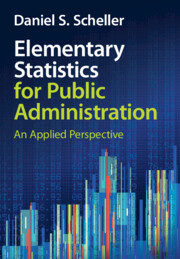Refine search
Actions for selected content:
92 results
3 - Optimization Theory and Algorithms
-
- Book:
- Mathematical Methods in Data Science
- Published online:
- 04 November 2025
- Print publication:
- 30 October 2025, pp 128-199
-
- Chapter
- Export citation
12 - Regression and Classification
-
- Book:
- Probability and Statistics for Data Science
- Published online:
- 19 June 2025
- Print publication:
- 03 July 2025, pp 495-598
-
- Chapter
- Export citation
10 - Mixed Effects Modelling
-
- Book:
- Analysing Sociolinguistic Variation
- Published online:
- 19 June 2025
- Print publication:
- 03 July 2025, pp 225-249
-
- Chapter
- Export citation
10 - Excursion: Problems in Machine Learning
-
- Book:
- Advanced Linear Algebra
- Published online:
- 27 May 2025
- Print publication:
- 12 June 2025, pp 272-302
-
- Chapter
- Export citation
REDUCING TYPE 1 CHILDHOOD DIABETES IN SAUDI ARABIA BY IDENTIFYING AND MODELLING ITS KEY PERFORMANCE INDICATORS
- Part of
-
- Journal:
- Bulletin of the Australian Mathematical Society / Volume 112 / Issue 3 / December 2025
- Published online by Cambridge University Press:
- 09 June 2025, pp. 574-576
- Print publication:
- December 2025
-
- Article
-
- You have access
- HTML
- Export citation
4 - Exploring the Suitability of Environmental Health Information for Parental Education Using Machine Learning Models
-
- Book:
- Multilingual Environmental Communications
- Published online:
- 16 May 2025
- Print publication:
- 05 June 2025, pp 75-103
-
- Chapter
- Export citation
2 - Statistics and Machine Learning for Textual Readability Studies
-
- Book:
- Multilingual Environmental Communications
- Published online:
- 16 May 2025
- Print publication:
- 05 June 2025, pp 23-52
-
- Chapter
- Export citation
Online Calibration Via Variable Length Computerized Adaptive Testing
-
- Journal:
- Psychometrika / Volume 75 / Issue 1 / March 2010
- Published online by Cambridge University Press:
- 01 January 2025, pp. 140-157
-
- Article
- Export citation
A Generalized Rasch Model for Manifest Predictors
-
- Journal:
- Psychometrika / Volume 56 / Issue 4 / December 1991
- Published online by Cambridge University Press:
- 01 January 2025, pp. 589-600
-
- Article
- Export citation
Robust Inference with Binary Data
-
- Journal:
- Psychometrika / Volume 67 / Issue 1 / March 2002
- Published online by Cambridge University Press:
- 01 January 2025, pp. 21-32
-
- Article
- Export citation
A Latent Transition Model With Logistic Regression
-
- Journal:
- Psychometrika / Volume 72 / Issue 3 / September 2007
- Published online by Cambridge University Press:
- 01 January 2025, pp. 413-435
-
- Article
- Export citation
A web-based dynamic nomogram for estimating talaromycosis risk in hospitalized HIV-positive patients
-
- Journal:
- Epidemiology & Infection / Volume 152 / 2024
- Published online by Cambridge University Press:
- 05 December 2024, e153
-
- Article
-
- You have access
- Open access
- HTML
- Export citation
3 - Sociolinguistic Approaches to Bilingual Phonetics and Phonology
- from Part I - Approaches to Bilingual Phonetics and Phonology
-
-
- Book:
- The Cambridge Handbook of Bilingual Phonetics and Phonology
- Published online:
- 14 November 2024
- Print publication:
- 21 November 2024, pp 65-85
-
- Chapter
- Export citation

Elementary Statistics for Public Administration
- An Applied Perspective
-
- Published online:
- 01 November 2024
- Print publication:
- 12 September 2024
-
- Textbook
- Export citation
Identifying determinants of waste management access in Nouakchott, Mauritania: a logistic regression model
-
- Journal:
- Data & Policy / Volume 6 / 2024
- Published online by Cambridge University Press:
- 02 July 2024, e29
-
- Article
-
- You have access
- Open access
- HTML
- Export citation
9 - Optimization Basics and Logistic Regression
-
- Book:
- Linear Algebra for Data Science, Machine Learning, and Signal Processing
- Published online:
- 01 November 2024
- Print publication:
- 16 May 2024, pp 335-364
-
- Chapter
- Export citation
2 - The Space Shuttle Challenger Disaster
-
- Book:
- Risk Revealed
- Published online:
- 05 April 2024
- Print publication:
- 11 April 2024, pp 13-23
-
- Chapter
- Export citation
Likelihood ratio test for the analysis of germination percentages
-
- Journal:
- Seed Science Research / Volume 34 / Issue 1 / March 2024
- Published online by Cambridge University Press:
- 02 April 2024, pp. 10-16
-
- Article
-
- You have access
- Open access
- HTML
- Export citation
Argument structure constructions in competition: The Dat-Nom/Nom-Dat alternation in Icelandic
-
- Journal:
- Nordic Journal of Linguistics , First View
- Published online by Cambridge University Press:
- 06 March 2024, pp. 1-35
-
- Article
-
- You have access
- Open access
- HTML
- Export citation
3 - Generalizing Regression Inside Out
- from Part I - Turning Regression Inside Out
-
- Book:
- Regression Inside Out
- Published online:
- 21 March 2024
- Print publication:
- 22 February 2024, pp 50-61
-
- Chapter
- Export citation
